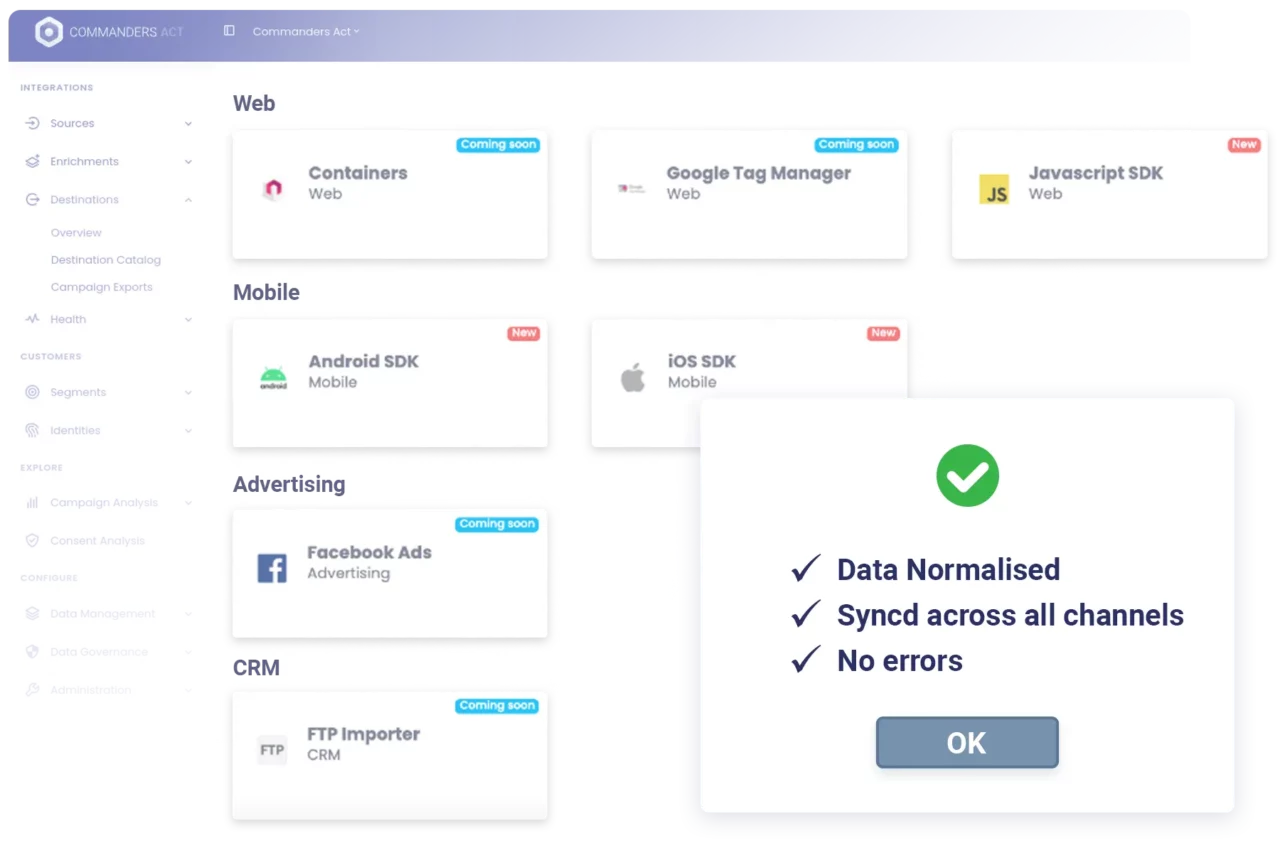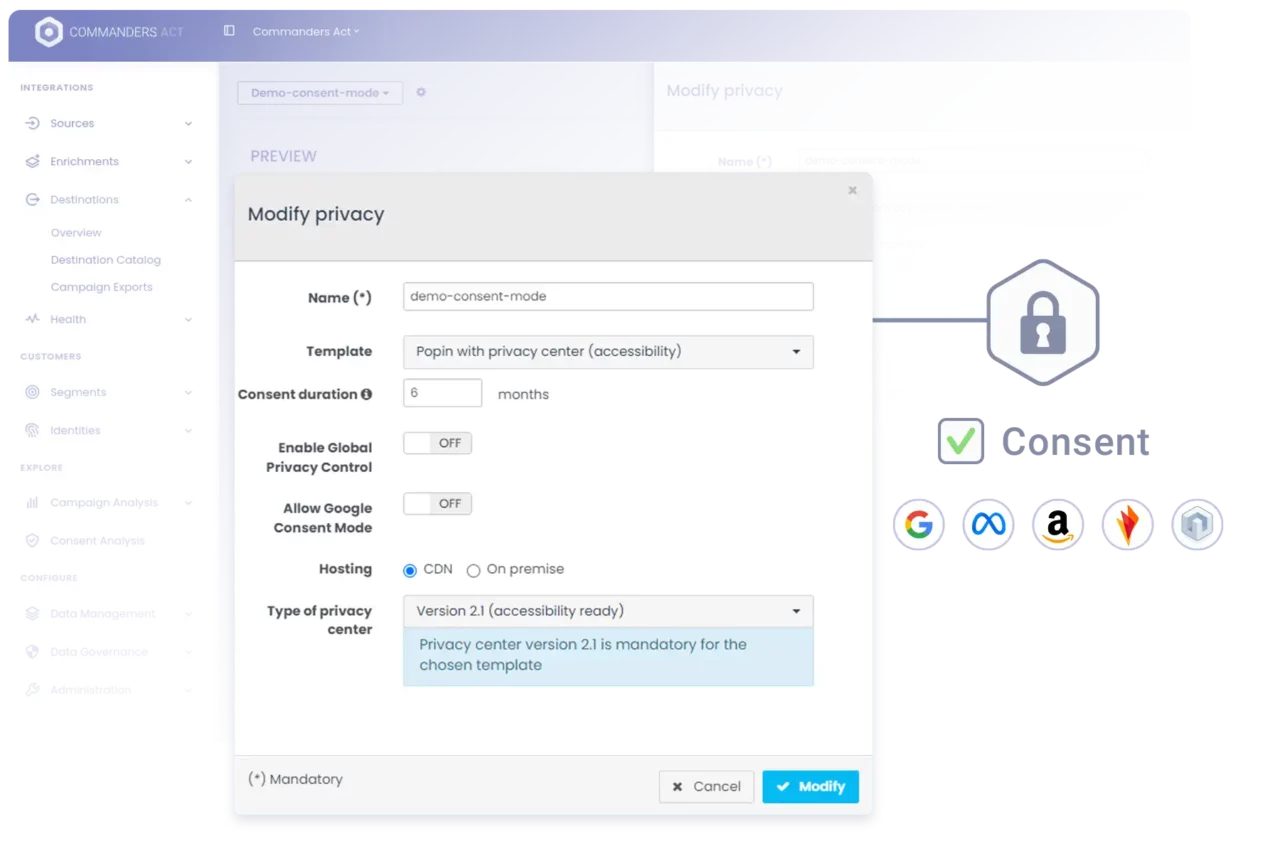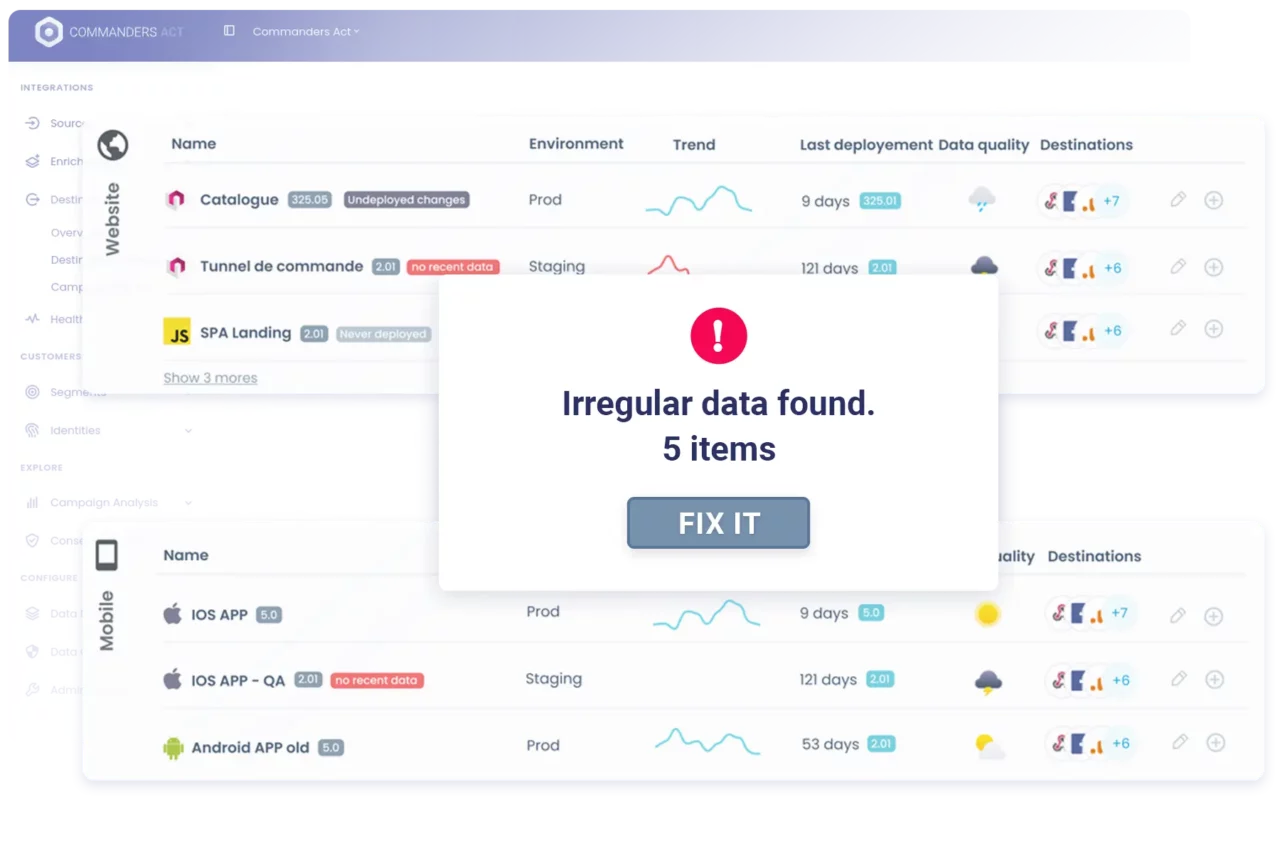PLATFORMX SERVER-SIDE TRACKING
First-party data collection & Server-Side distribution
Server-side & first-party data collection is the new normal. Enjoy a smooth & easy transition from Client-Side Tag Management with PlatformX.

Why is first-party data collection the new normal?
Embracing first-party data collection is pivotal for businesses aiming to thrive in this new era, marking a strategic move towards more ethical, effective, and customer-centric marketing practices.
In the wake of third-party cookies’ demise and rising privacy demands, first-party data collection emerges as the new normal. This pivotal shift enables businesses to directly harness customer insights, ensuring relevance and competitive advantage in a privacy-first digital ecosystem.
As users seek greater control over their data, advertisers must adapt, prioritizing transparent, consent-based engagement. This not only nurtures trust but also empowers advertisers to build a proprietary asset of customer data, essential for tailored marketing strategies, personalized experiences and furthermore to feed AI-powered algorithms with better data.
The transition to first-party data is not merely about adapting to change; it’s about seizing the opportunity to deepen customer relationships and drive sustainable growth in a post-cookie landscape.
Use Cases For 1st-party Data Collection
GTM-ready Server-Side Integration
Already using a client-side integration of GTM on your site or app? Want to swiftly move to server-side destinations?
Keeping Cookies alive
1st-party cookies also are being rejected or cancelled. With our Cookie Keeper feature, you can save up to 20% of cookies.
Collecting Data from Mobile Apps
Like old-age Client-Side tags (!!), SDKs are slowing up mobile apps. Server-side applies to all devices.
Omnichannel Data Sources
Designed for real-time data collection, standardization, and cleansing, Enterprise Tag Manager boasts a high-performance, cloud-based architecture. Leveraging a global network of secure content distributors (CDN) ensures rapid data management and reliable performance, even on high-traffic sites and apps.
Customer data originates from various sources, including websites, mobile apps, physical stores, and IoT devices. Enterprise Tag Manager serves as a central hub for aggregating and standardizing this data effectively.
We adopt a standardized data layer approach in our web containers and SDKs to enable you to create a custom nomenclature for customer interactions. This normalized Data Layer allows you to set and monitor your data standards, while the Event Inspector facilitates real-time compliance checks.


Manage & Share User Consent
Consent banners are multifaceted and complex to manage. Always deliver the right consent banner to the right individual with our Geo Targeting and Local Templates :
- Legal systems : GDPR, CPRA, APPI, Loi 25
- Industry standards : IAB TCF or Google Consent Mode V2
- Accessibility standards RGAA or WCAG 2.0 level AA
Register user consent choices across devices and apply them across visits with our identity reconciliation systems. Roll them up per destinations with different settings based on registered choices.
With consent fatigue growing among users, site owners need to deploy new strategies to develop high consent rates… A team of seasoned professionals at Commanders Act is here to help provide best practice solutions to help you increase your consent rates.
More on Trust Commander
Q/A Made Simple
Clean data starts with a sound data structure. Normalised Data Layer is an innovative feature that allows site owners to define what type of data is expected for each event (e.g. validation rules) and what should be done if the received data is not compliant.
Source Data Quality Dashboard monitors the health of incoming data and sends Custom Alerts in case of irregular data.
Errors won’t affect your data collection for long with our Data Cleansing scripts. No need to rely on IT teams to correct irregularities as most of our no-code features don’t require any technical skills to be set up. Our on-boarding experts are also available to help you at any stage of set up.








